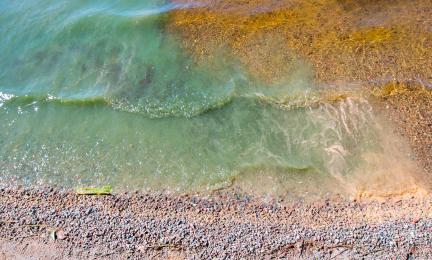Short address: www.syke.fi/projects/hazbref
Background
Hazardous substances released from industries have a harmful effect on the Baltic Sea environment. Yet, the pathways from the installations to the sea and the emission reduction methods are not well known. The main instrument on EU level to control industrial releases is the Industrial Emissions Directive, particularly through the publication of BAT documents (BREFs). However, the BREFs published so far do not contain comprehensive information on specific hazardous substances in industry which makes the management difficult for both industry and the authorities.
What were the project aims?
HAZBREF project aimed to increase the knowledge base of the industrial sources and the reduction measures of hazardous chemicals. This was done by analysing the use of hazardous substances in industrial sectors. To this end, existing information from other EU regulatory frameworks, such as REACH and the Water Framework Directive was used. Moreover, the project aimed at enhanced institutional capacity by better exchange and utilization of existing information on hazardous substances between these regulatory frameworks.
What were the expected results?
The capacity to manage industrial chemicals is enhanced among both authorities and industries when the use and risks of chemicals are better addressed in the BREFs. The information is useful for HELCOM, the Baltic Marine Environment Protection Commission, in the development of actions to reduce the inputs to the Baltic Sea.
Further information
- Project manager Kaj Forsius,
firstname.lastname@syke.fi
Publications of Work Package 2
2.1 report:
Approaches for a better use of available data to prevent or reduce releases of substances of concern from industrial installations (pdf, 1.91 MB)
-
Annex 1:
Approaches to tackle substance of concern (docx, 3.51 MB) -
Annex 2:
Table of SVHCs and WFD PS identified for case sectors (pdf, 766.2 KB) -
Annex 3:
Use descriptions in the ECHA chemical database (docx, 562.56 KB) -
Annex 4:
Identification of chemicals belonging to chemical classes used as textile auxiliaries (pdf, 1.42 MB) -
Annex 5: Activity 2.2 Results
Technical Report Fate of substances during emission treatment (pdf, 593.44 KB) - Annex 6: Interactive scheme: web version https://hazbref2.rescol.de/doku.php
and description of the scheme:
HAZBREF WP2 Interactive Scheme (docx, 534.65 KB)
Publications of Work Package 3
The centre of this report is the analysis of the information exchange under the IED, that results in BREFs and corresponding BAT conclusions. This report presents proposals how relevant information on chemicals can be more systematically addressed at the right time during BREF reviews. Special emphasis is given to possibilities to better use available data generated in the context of other pertinent EU legislation. The report not only proposes general measures for improvement of the BAT information exchange but also focuses on what specifically has to be improved, by which means and how it could be done.
Report: Analysis of the interfaces, possible synergies or gaps between Industrial Emission Directive, REACH Regulation, Water Framework Directive, Marine Strategy Framework Directive and the POP Regulation concerning hazardous substances (pdf, 1.53 MB)The report aims to deliver recommendations for better use of information on hazardous substances generated under key legal frameworks for development of BREFs.
Publications of Work Package 4:
The report focuses on enabling the progress of Circular Economy (CE) by promoting non-toxic material cycles through the BREF process. The report focuses on the CE aspects of the HAZBREF case sectors: polymers and fertilisers, textiles and the surface treatment of metals and plastics.
Sector guidances
The sector guidance reports describe the best practices in chemicals management identified in the HAZBREF project and are available from Swedish Environmental Protection Agency's websites:
- Sectoral Guidance for Chemicals Management in the Textile Industry. HAZBREF-project Activity 4.1 report. ISBN 978-91-620-6955-1.
- Sectoral Guidance for Chemicals Management in the Surface treatment of metals and plastics Industry. HAZBREF-project Activity 4.1 report. ISBN 978-91-620-6954-4.
- Sectoral Guidance for Chemicals Management in the Chemical Industry with focus on the production of fertilisers and polymers. HAZBREF-project Activity 4.1 report. ISBN 978-91-620-6953-7.
BAT candidates for Textile Industry BREF
BAT descriptions for TXT BREF review (pdf, 1.24 MB)These BAT candidate descriptions were provided for the TXT BREF review process. The document describes five different BAT candidates for textile industry.
